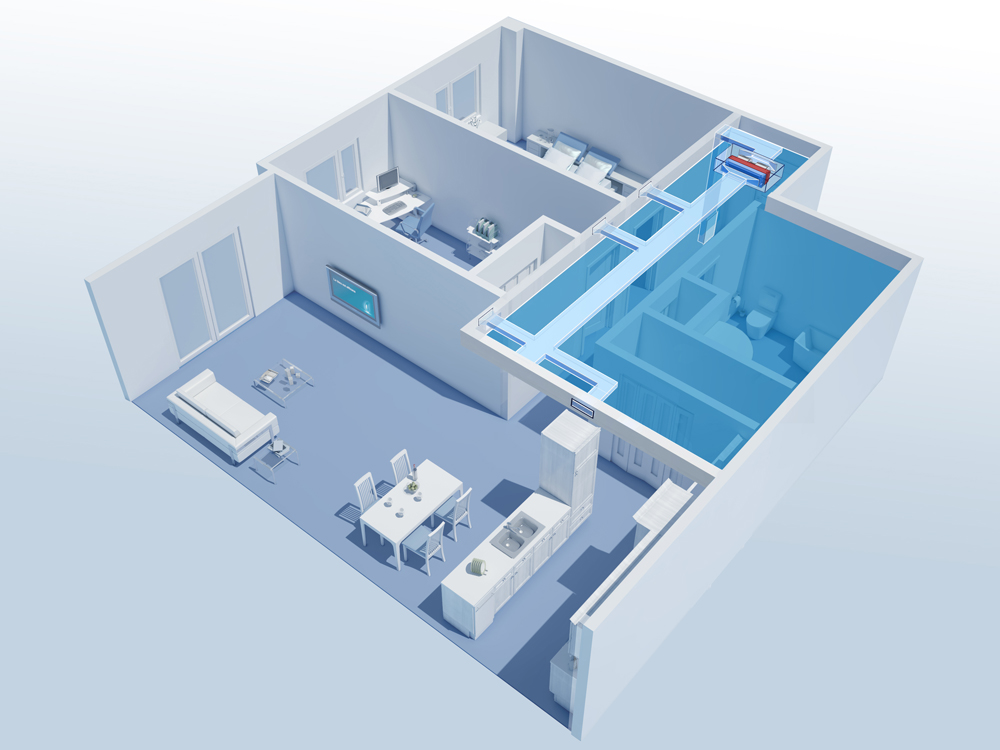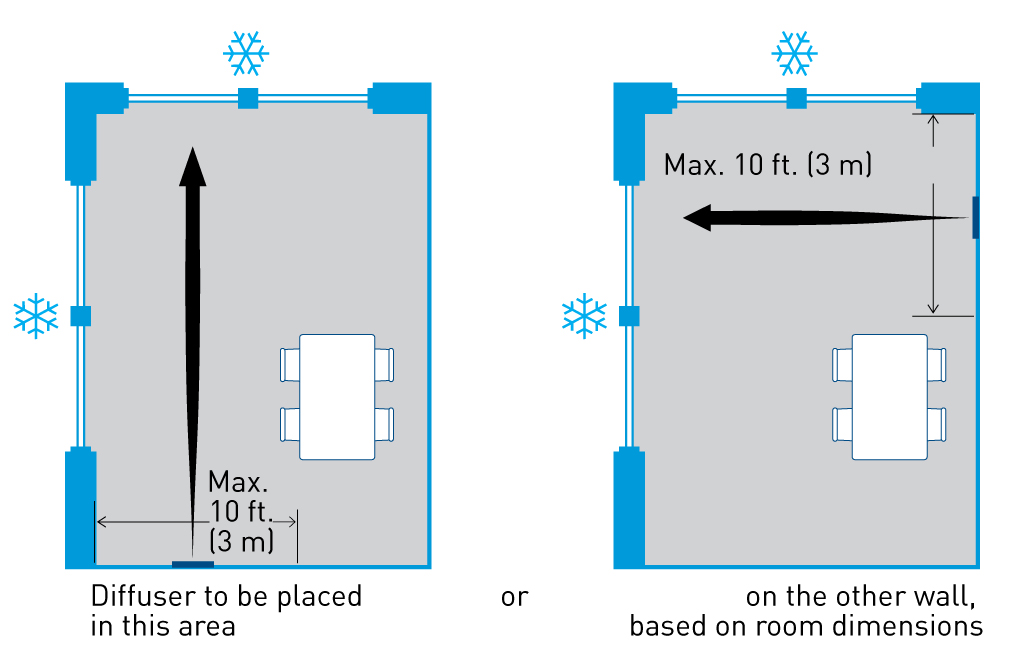In this advantageous heating solution, the air outlets are placed high on the walls opposite windows rather than on the ceiling or along the baseboards near windows and outside walls. What’s more, a compact fan coil installed in a suspended ceiling can double as an air conditioner. Not only is this solution compact, it also increases ceiling height compared to a classic air feed system that goes right to the windows!

Four key considerations for a comfortable installation
Once identified, the four factors in question were submitted to a number of ventilation experts for final validation. The four factors are:
- Ensure a terminal air flow speed of approximately 100 ft./min. on the opposing wall (measured at the ambient air temperature).
- Keep the fan coil unit fan in continuous operation.
- Limit oversizing the room’s heating capacity to 20% to minimize air movement in the room.
- Diffuse air at 8 to 15 °C higher than the setpoint temperature (ASHRAE).
If the air speed is insufficient, the air will not reach the windows. An air speed that’s too high risks creating discomfort, such as a hot air flow or blasts of hot air that are unpleasant for occupants. In both cases, the result is a lack of comfort.
Moreover, it is important to choose the adequate direct-throw air diffuser based on to the room’s dimensions, the desired air flow and terminal velocity sought. Furthermore, choose diffusers whose noise levels are indicated or be sure the noise level is not intrusive during operation. Manufacturers’ catalogues normally include this information and some manufacturers will even help you choose the right diffuser for your needs.
Other considerations
In addition to these four key factors, the following should be considered:
- Use any type of direct-throw diffuser as mentioned above, ideally without deflection and above all non-vertical.
- Multiply by 0.7 the throw distances provided by the manufacturer if the diffuser sits more than 2 ft. (0.6 m) from the ceiling to account for the lack of the Coanda effect.
- Position diffusers at the top of the walls, above the head of a tall person standing upright and ideally (if ceiling height permits) above or below suspended ceiling elements such as chandeliers, fans, etc.
- Note that in a room with two walls exposed to cold, it is not compulsory to place the diffuser near a cold wall; the diffuser may also be distanced from the adjacent cold wall by a maximum of 10 ft. (3 m).
- On walls wider than 12 ft. (3 m), install multiple diffusers distributed at equal distances:
|
Wall width (ft.) |
Number of diffusers |
|
0-12 |
1 |
|
12-24 |
2 |
|
24-36 |
3 |

To conclude
Numerous residential projects already come with this heating/air-conditioning option. Now you have all the information you need to offer this comfortable and compact solution as part of your own projects! For any questions about this article, contact us or talk to a diffuser manufacturer who can give you the answers you need regarding throw, terminal velocity, noise levels and so on.
Alice HAMEL, P. Eng.
DATECH advisor, Technology & Innovation
Article based on a CTGN study.










